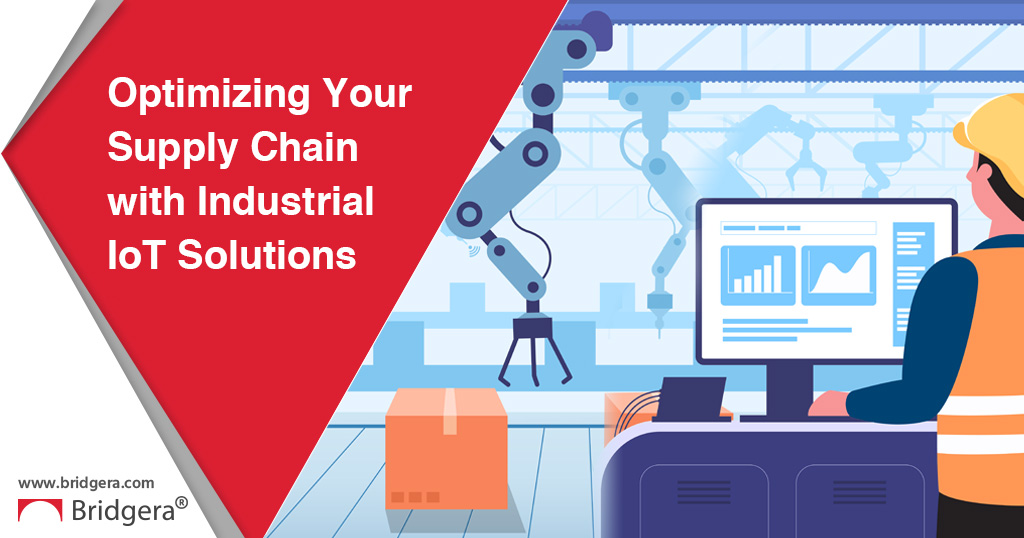From bare supermarket shelves to waiting lists for gaming consoles and GPUs, the COVID-19 pandemic has had a visible and undeniable effect on supply chains. No one is more aware of this than manufacturers themselves. The situation has compelled many of them to reevaluate their operations from top to bottom, including their inventory systems, workforce protocols and risk-management strategies.
As the old saying goes, however, in every crisis there’s also an opportunity. The pandemic may have upset the status quo, but it’s also exposed shortcomings that have traditionally been downplayed or overlooked. Manufacturers can capitalize on this turbulent period to build a more robust and streamlined ecosystem in the long term through industrial IoT (IIoT) solutions.
Broadly speaking, there are three areas where industrial IoT platforms can empower manufacturers to optimize their supply chains going forward.
1. Using IoT solutions for manufacturing to pivot during disruptions
In response to pandemic-related fluctuations in demand and general market uncertainty, manufacturers around the world are currently engaged in processes of shifting, repurposing or shutting down assembly lines. Decisions like these are challenging even under ordinary circumstances. The current situation makes them that much harder.
Fortunately, the recommended best practices haven’t changed. Here are some actionable steps that manufacturers can take to roll with disruptions and emerge stronger.
- Design scenarios that mimic actual supply and demand. Outlining informed hypothetical scenarios can better prepare your company to respond to real-world changes.
- Determine your supply commitments and the detailed logistics necessary to fulfill those commitments. At first glance, this seems like a no-brainer. But you’d be surprised to find how often it’s assumed rather than documented.
- Develop a near- and mid-term roadmap that tries to anticipate current industry trends. This is something you’ll need to revisit regularly, but it could save you the time and cost of having to assemble a rapid response team for every new development.
It should come as no surprise that these steps dovetail with industrial IoT applications. Even amid unpredictable times, manufacturers can use the data gathered from industrial IoT analytics to gain unprecedented insight into aspects of their operations that previously lacked visibility. For example, predictions about fuel costs or equipment maintenance that are based on actual, current operational data could make the difference between meeting a high-stakes supply commitment or an upset customer claiming breach of contract.
2. Ensuring the safety and productivity of your workforce with IIoT solutions
Although it’s easy to think of manufacturing as a series of mechanical processes, successful companies know better than to ignore the human element. And during the pandemic, the crucial role played by the workforce became all too apparent. Businesses continue to struggle with residual issues like remote work, staffing shortages and skills transfer.
Industrial IoT solutions could prove invaluable here, too, as they help to solve for entrenched workforce challenges. Here are some basic examples:
- With a web-based dashboard or even a customized smartphone app, a supervisor can remotely monitor multiple aspects of a modern manufacturing process—from sourcing parts to shipping products and everything in between.
- Decision-makers can consult historical trends identified through industrial IoT analytics to right-size staffing levels across sectors or plants in anticipation of ramp-ups or slowdowns.
- Employees who haven’t received dedicated training in equipment maintenance or fleet management can benefit from user-friendly industrial IoT platforms that tap into the power of artificial intelligence (AI) or machine learning (ML).
By increasing the safety as well as the flexibility of your company’s workforce, capabilities like these can alleviate some of the root causes of both temporary and ongoing supply chain problems. What’s making them possible are the tightly integrated IIoT solutions that underpin the new era of smart manufacturing.
3. Leveraging industrial IoT platforms to gain a competitive advantage
Staying calm when everyone else in your industry is panicking sends a reassuring signal to your current and future customers. That said, it’s hard to keep cool when supply chain issues—whether your own or those of your suppliers—are a fundamental concern.
What generates confidence is resilience. It’s the comfort that comes from knowing your business is prepared to pivot in the face of uncertainty or that your workforce is able to adapt to those pivots in turn. As outlined above, that can be achieved with IoT solutions for manufacturing that provide the automation and analysis your company needs to succeed.
Additional Industrial IoT solutions can take those gains further and extend your competitive lead. How exactly that takes shape is up to you. As each company and manufacturing process is different, it’s essential to find one that targets your specific industrial IoT applications.
Whatever IIoT solution you choose, it should feed data-driven analytics and scenario modelling, advanced network analysis, mobile or remote worker enablement, and collaboration among the ecosystem, to name just a few. Furthermore, it should integrate seamlessly with your existing equipment and processes while also respecting your budget. There are clearly any number of advantages to IoT-enabling traditional operations, but the ultimate goal of those modernization efforts is to keep costs in check by becoming more efficient and agile.
Customized, cost-effective industrial IoT solutions from Bridgera
With all the volatility of the pandemic still with us, there’s no better time or reason to optimize your supply chain. And Bridgera can help you do it. Our extensive experience with industrial IoT application development and rapid prototyping can take a specialized IIoT solution from concept to deployment within a short timeframe.
Manufacturers around the world already rely on our Bridgera Monitoring industrial IoT platform to manage their fleets, oversee manufacturing and logistical processes, analyze trends and usage in real time and integrate with third-party systems. Bridgera Monitoring enables them to keep a tight fix on all the players and processes in a supply chain. As a result, they can take supply chain disruptions in stride, adapt their workforce quickly and stay ahead of the competition.
Contact us today for a no-cost, no-strings consultation. Along with walking you through the specifics of Bridgera Monitoring, we’ll take the time to assess your needs and discuss how we can design the right IIoT solution to meet your use case and your budget.

